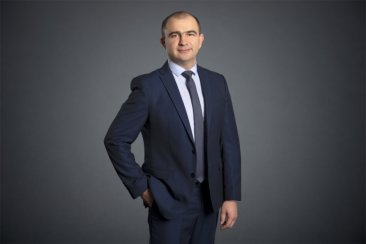Contact center of the Ukrainian Judiciary 044 207-35-46

Under the Memorandum of Understanding with the EU on Macro-Financial Assistance, Ukraine has committed to improve its bankruptcy regime in line with the main principles of EU Directive 2019/1023 on preventive restructuring.
The matter was brought up during an online discussion on "European Insolvency Trends", which was joined by Supreme Court Judge of the Commercial Cassation Court Oleksandr Banasko. The event, organised by the EU project Pravo-Justice, focused on the practical issues of implementing the Directive in Central and Eastern Europe.
Oleksandr Banasko noted that with the entry into force of the Code of Ukraine on Bankruptcy Procedures, pre-trial rehabilitation came into effect and case law demonstrated that the institution was used by participants in economic turnover. In particular, the Commercial Cassation Court within the Supreme Court reviewed decisions in seven cases in which the courts came to the conclusion that the pre-trial rehabilitation plan should be approved. In four of these cases, the decision to approve the pre-trial rehabilitation plan was upheld, and in three cases the Court upheld the position of the court of previous instance to refuse to approve such a plan.
"In other words, a tool that can be classified as a preventive restructuring is already in place in Ukraine, and the extent to which it complies with EU Directive 2019/1023 will be determined when the legislator implements this document into national law. The main thing is that when improving the national bankruptcy regimes in accordance with the basic principles of EU Directive 2019/1023, the critical comments of the expert community of those countries that have already implemented the Directive should be taken into account," the Supreme Court judge said.
Speaking about the fact that, according to foreign experts, preventive restructuring was much more profitable for creditors, Oleksandr Banasko expressed hope that the procedure could become widespread in Ukraine. After all, the pre-trial rehabilitation procedure is currently used in a small number of cases involving the negative financial condition of debtors. One of the reasons for this, according to the speaker, may be, in particular, the complicated procedure for agreeing on terms and conditions by all groups and classes of creditors, which requires finding a compromise for both secured and unsecured creditors, each of whom has their own interests and expectations from such a procedure.
The speaker pointed out that restructuring allowed the company to receive more funds to repay its claims, although it took a longer period of time. This may be an important factor for creditors in our country to choose the model for settling the payment of problem debts. The more successful cases there are in the national legal order, the more often this procedure will be used. "The main thing is to make sure that the procedure does not become a tool for abuse and does not create additional opportunities for mala fide debtors to avoid repayment or unreasonably delay debt repayment," summed up Oleksandr Banasko.